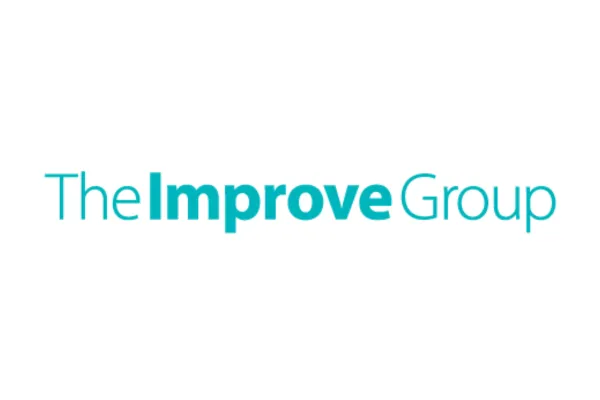
How The Improve Group Became a Worker-Owned Cooperative
Journey to Becoming a Worker-Owned Cooperative
Worker-owned cooperatives represent a powerful alternative to traditional business succession planning, offering a path that benefits both owners and employees.
In 2023, The Improve Group, a Minnesota-based evaluation consulting company, completed its transition to this ownership model. Initially founded by Leah Goldstein Moses as a solo consulting practice in 2000, the company’s journey to becoming a worker-owned cooperative offers valuable insights for other business owners who are considering their exit strategies.
As Goldstein Moses reflected in a recent podcast episode, “Our team is excellent, and I wanted to honor all their contributions while ensuring a fair exit for myself.”
Why Consider a Worker Cooperative?
After 20 years at the helm of The Improve Group, Goldstein Moses began contemplating her company’s future. Approaching her 50th birthday, she wasn’t completely retiring; she was seeking her next chapter.
Her primary goals centered on sustaining the company’s culture while giving herself some options. Goldstein Moses initially explored the employee-ownership model she was most familiar with: Employee Stock Ownership Programs (ESOPs), but she ultimately chose the worker cooperative model. Her decision came down to preserving and enhancing The Improve Group’s legacy of excellence and collaborative culture.
What Makes a Business Suitable for Becoming a Worker-Owned Cooperative?
According to Benjamin Tsai, director of the Shared Ownership Center at Nexus Community Partners, successful transitions to worker cooperatives require several key elements. The business should be financially healthy, with ideally 10 or more employees, to ensure a strong board of directors and operational stability.
“The worker co-op model isn’t there to solve problems as far as business health,” Tsai emphasizes. “Cultural fit is important.”
The Improve Group exemplified the ideal candidate through four key characteristics:
Values-based culture with clear mission alignment
Existing participatory management practices
Strong analytical approach to decision-making
Clear role definition and accountability
Worker Co-ops vs. ESOPs
Worker cooperatives offer distinct advantages over ESOPs, particularly in terms of immediate benefits and setup costs.
While ESOPs focus on employees accumulating shares over time with benefits primarily realized at exit, worker cooperatives enable immediate ownership participation. Members can receive profit sharing, also known as patronage, from the day they own the business.
Additionally, the structure is more straightforward and more cost-effective, with fewer ongoing audit requirements. For The Improve Group, the cooperative model aligned perfectly with their existing participatory culture and desire for employee engagement.
The Transition Process to a Worker-Owned Co-op
The transition typically requires 9 to 18 months of careful planning and implementation. Key steps in the process include:
Preparing employees and the business for transition
Checking employee interest and engagement
Drafting articles and bylaws
Developing a management structure
Creating financial projections
Securing financing through CDFI lenders
Coordinating with lawyers and CPAs
The process involves multiple professionals working together to ensure all pieces fit. While the timeline can be shortened, rushing isn’t recommended. Companies should focus on creating a fair deal structure based on the business’s debt capacity rather than maximizing its sale price.
Managing Cultural Transition
The Improve Group implemented a thoughtful approach to employee integration, including a six-month consideration period before workers can become owners. This allows potential worker-owners to fully understand their new roles and responsibilities.
For example, Taryn Mortimer, who joined after the transition, found that this period provided valuable time for self-reflection and cultural assessment. The waiting process encourages employees to move beyond traditional employee mindsets toward active ownership thinking.
Leadership and Governance for a Worker-Owned Cooperative
Worker cooperatives can maintain traditional management structures while incorporating democratic ownership. The governance structure operates on a one-member, one-vote basis for major decisions and board elections, while day-to-day operations continue under established leadership teams.
This hybrid approach ensures efficient business operations while maintaining the benefits of broad employee ownership and participation.
Navigating Challenges for a Worker-Owned Co-op
Transitioning to a worker cooperative requires careful navigation of both emotional and practical challenges. The negotiation process can strain relationships as parties balance fair value with business sustainability.
Success requires maintaining open communication and focusing on shared goals. The Improve Group’s strong, data-driven culture helped facilitate difficult conversations and decision-making throughout the transition process.
Keys to Successful Worker Co-op Transition
The Improve Group's experience highlights several critical elements that contributed to their successful transition. As Leah Goldstein Moses reflects on their journey, these key factors emerged as essential components for any business considering the worker cooperative model:
Building a values-based culture with intentional focus
Establishing a clear role definition and responsibilities
Maintaining an analytical approach to decision-making
Creating strong data systems and financial records
Using data to guide through challenges and transitions
Find Supportive Resources
The Improve Group’s successful transition demonstrates the viability of worker cooperatives as a succession planning option!
Could this be an option for your company? For Minnesota business owners considering their exit strategies, MNCEO provides resources and guidance for exploring worker ownership as a path forward. Contact us to get started, today!
